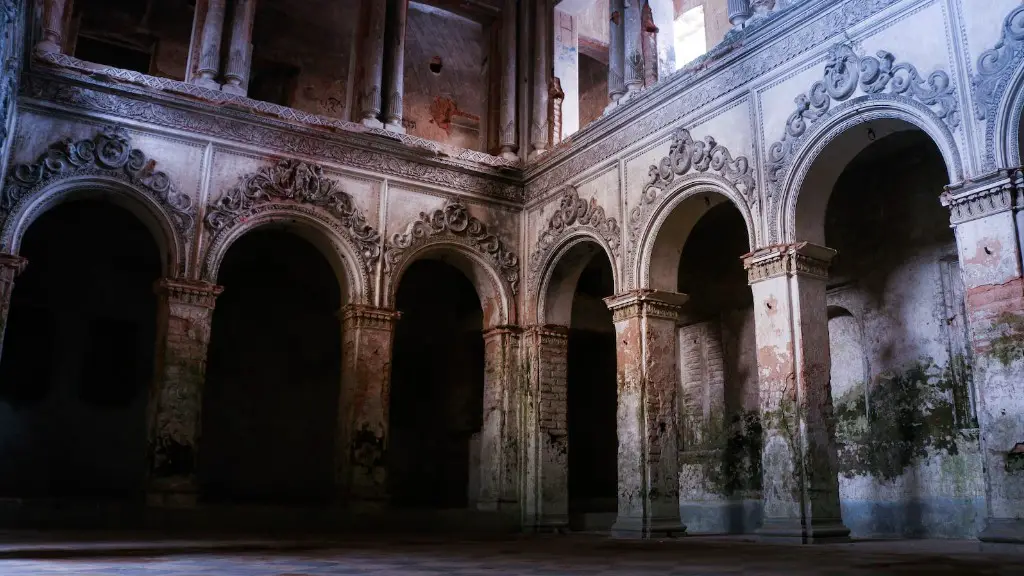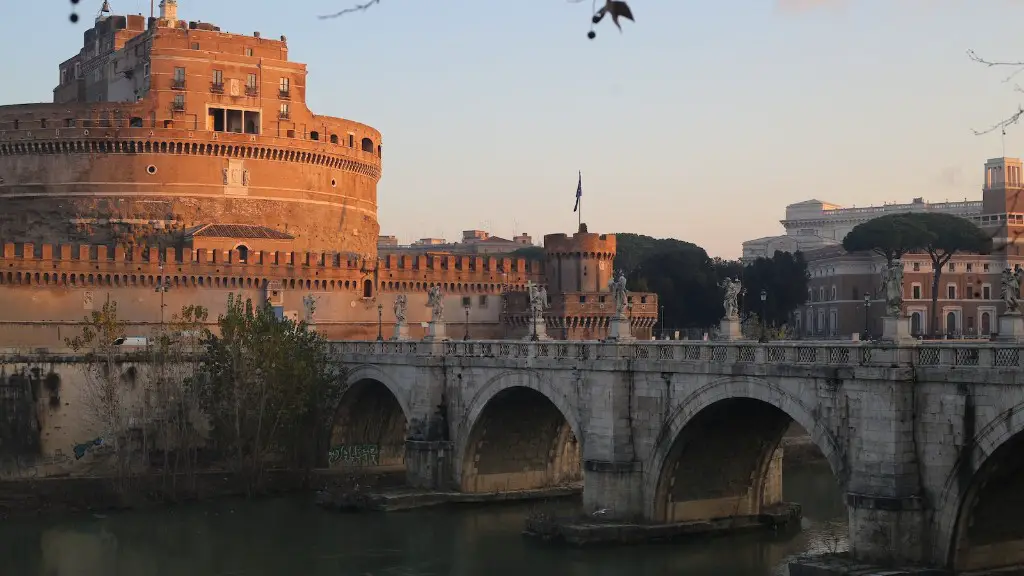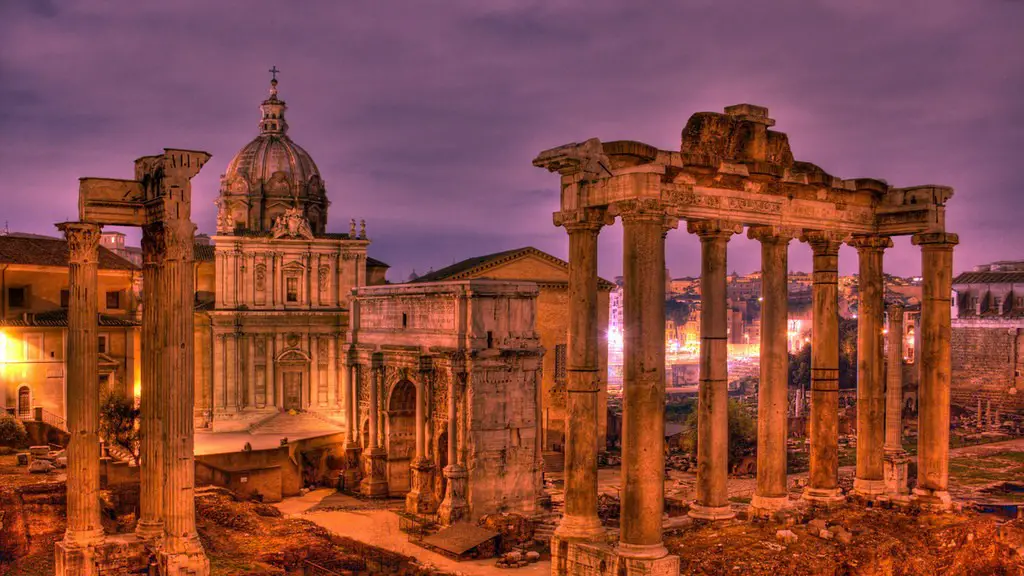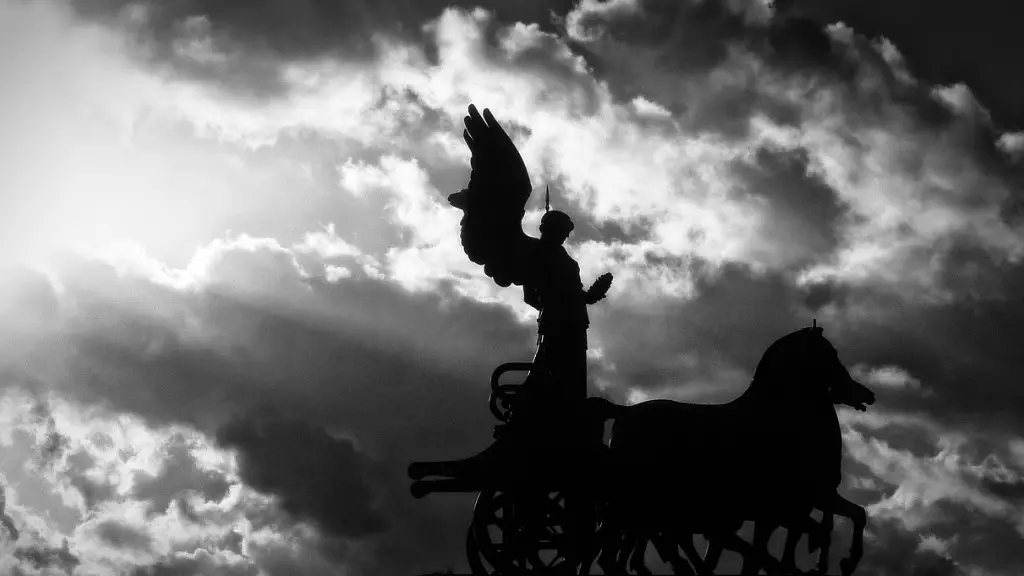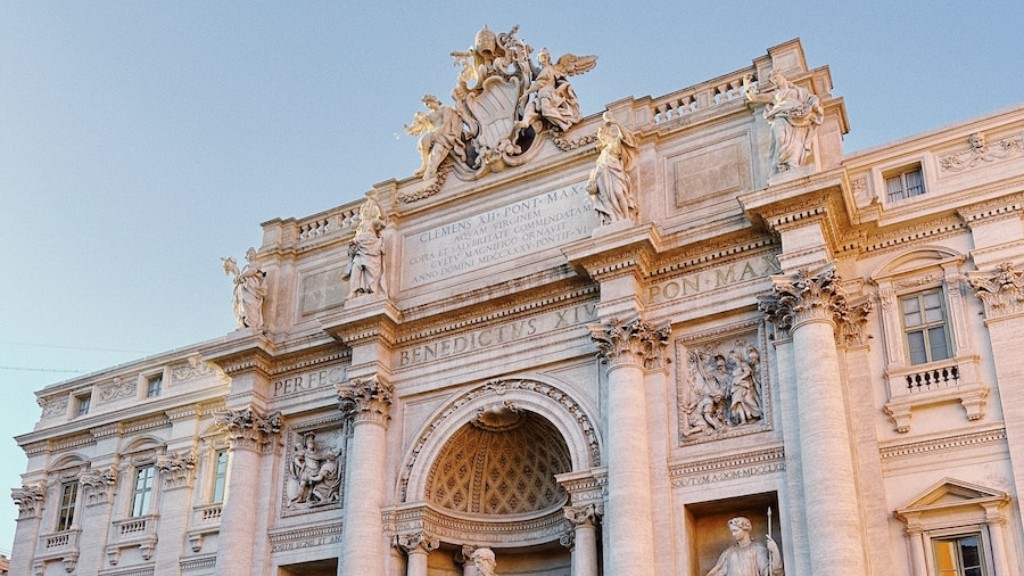Ancient Rome was an incredibly advanced civilization for its time, and science played an important role in its progress and development. The Roman people were highly knowledgeable in the disciplines of mathematics, architecture, physics, engineering, geography, and astronomy. They were also familiar with the principles of botany and horticulture, some of which they drew from the works of writers such as Aristotle, Pliny the Elder, and Cicero.
Rome was a great trading centre, and the conquests of the Roman Empire allowed for the exchange of knowledge from the east, west and north. This lead to Rome becoming an important centre of scientific learning. Much of the science practiced and studied during this period was based off of previous works, but Roman scientists made significant additions and advances to many fields.
Mathematics was an important field for the Roman people, who made significant advances particularly in geometry. Knowledge of geometry was important for architectural and engineering feats, such as the aqueducts and the Colosseum, yet Roman mathematicians also made strides in trigonometry and algebra. In addition to the advances made in mathematics, Roman engineering and architecture allowed them to construct the old skyscrapers we now refer to as the Pantheon and the Coliseum.
Astronomy was also of interest to the Romans, who gathered early understandings of the motions of stars and planets. They used this knowledge to build the Antikythera mechanisms and calenders, which were used to predict the phases of the moon and the movements of the planets.
Roman knowledge of physics was also an area of importance, largely due to its application to engineering and construction. Roman scientists were the first to experiment with steam power, and their work laid the foundation for future exploration into the principles of electricity and magnetism. This knowledge was also useful in building the Pantheon, which was constructed with domes of arches, the force of which was able to be calculated when aided by physics knowledge.
The Romans also advanced in the field of medicine, drawing off the works of Hippocrates and Galen yet also making their own discoveries. This includes understanding the use of a pulsometer for taking pulses as well as diagnosing diseases. Roman doctors used herbal medicines and studied anatomy, which laid the foundations for the science of modern medicine.
Overall, it is clear to see that science played an important role in the development of the Roman Empire, including the mathematical, architectural, astronomical, and medical advances they made. In the absence of a scientific revolution in the Latin West, Rome undoubtedly provided the groundwork for later scientific advances.
Architecture
The ancient Romans were incredible architects, able to build structures with unbelievable feats of engineering. From colossal amphitheatres to intricate aqueducts, a Roman architect calibrated their buildings to achieve maximum efficiency. One of the most impressive of these structures was the Colosseum, built between 70 and 80 AD, it remains a reminder of the ingenuity and skill of Roman architects. It stands as one of the greatest examples of the involvement of science in the structure of ancient Roman buildings.
Another example of Roman architecture is the Pantheon, a magnificent temple dedicated to the gods and goddesses of Rome. The Pantheon displays incredible architectural prowess due to its dome which has opening at its centre. This dome was an architectural feat that was only made possible due to advances made in physics by the Roman people. For this reason, we can conclude that science was incredibly important in the planning and construction of ancient Roman architecture.
The Romans were also proficient engineers, able to create lavish public baths and baths with intricate plumbing systems that brought in fresh water supplies. In addition to aqueducts, they were also able to design effective drainage and sewage systems which greatly aided in public health, decreasing the spread of disease. All in all, it is clear to see that science was of great importance to the architects and engineers of ancient Rome.
Cartography
The ancient Romans had an immense understanding of geography and the principles of cartography. Roman cartographers had detailed maps of the Mediterranean world, drawing off the works of Eratosthenes and Strabo to create accurate maps of Europe, Africa, and the Middle East. The Romans used these maps to better assess the implications of their military campaigns, as well as for construction purposes.
Roman cartographers also made strides in the understanding of orientation, devising the concept of longitude, latitude and the prime meridian, which was later used on modern maps. This knowledge was also of use to the Roman navy, who needed an understanding of the position of their ships in order to navigate effectively. The concept of longitude and latitude was also integral to the making of astrolabes, which were an important navigational tool in the ancient world.
The Roman Empire saw remarkable advances in the advancement of cartography undertaken by the military, engineers, and for the purposes of navigation. Their catalogue of maps could be used to benefit future generations, creating exponential navigation capabilities across diverse regions.
Agriculture
The Romans were well versed in the sciences of agriculture due to the fact that much of the economy relied on farming. They used principles of animal husbandry, crop rotation and introduced new methods such as terracing, which were essential in the abundant production of food. The practice of irrigation was also widespread and the Romans were arguably the first to create an effective irrigation system using aqueducts.
In addition to engineering and constructions methods, the Romans also studied botany, with many writing treatises on the botanical sciences. Unfortunately, the Roman knowledge of plants and plant medicine was also used for less noble means, as poisons from plants were also commonplace in the Roman world.
The ancient Romans also pursued scientific research in the field of horticulture. Roman cultivators exchanged knowledge and created various types of hybrid plants, which were subsequently studied for their medicinal properties. It is clear that the Romans used their knowledge of botany and horticulture to benefit the agricultural industry on a large scale.
Aqueducts
Aqueducts were engineering marvels of ancient Rome. The use of aqueducts allowed Rome to efficiently transport water from more distant sources, increasing the access to fresh water within the city. This was a major advancement in the study of civil engineering and hydrology, as it demonstrated the Romans’ understanding of the flow of water as well as their skill in designing and constructing elaborate systems of pipes and tunnels.
The use of scientifically designed aqueducts was also of great benefit to the agricultural industry. Ancient Rome relied heavily upon the abundant production of food, and the introduction of water resources into dry areas allowed for advancements in the cultivation of crops. In addition to this agricultural benefit, aqueducts also provided an invaluable source of water for individuals within the city of Rome itself.
In conclusion, aqueducts were an impressive feat of civil engineering and hydrology which could not have been achieved without a knowledge of scientific concepts. It is clear that the Romans’ proficiency in engineering, hydrology and mathematics, as well as a strong understanding of the principles of civil engineering allowed them to build such remarkable engineering feats.
